微信小程序酒店管理信息系统研发(WebStorm,node.js,MySQL)(任务书,开题报告,论文17000字,程序代码)
摘 要
随着社会经济的蓬勃发展,人们的消费水平在不断增长,外出旅行愈加频繁,酒店客房量的需求也在加强,这给酒店行业的发展带来了机遇与挑战。如何做好酒店住客的引流工作,如何管理好酒店,为酒店住客提供最优质的服务,成为酒店发展的关键。因此,结合现代软件技术和微信相关技术,整合开发一套微信酒店管理系统具有十分高的价值。
本文通过对国内外酒店管理系统的现状分析,结合微信端相关技术,建立一个让酒店住客和酒店经营者更触手可及的微信酒店管理系统。微信酒店管理信息系统的研发主要内容以从酒店住客预定到入住整个流程为主,辅助其它细节性的服务功能,提升酒店的服务质量,从而提高酒店住客满意度。主要分为两部分实现,客户端在移动端微信APP中完成,以微信小程序关联微信公众平台的形式面向酒店住客。酒店住客可以在手机微信端完成酒店房间的预定,更加省心省力地入住酒店,还可以通过微信公众平台获得酒店相关周边服务。另一部分为后台端,后台系统的功能有订单管理、房间管理,入住人员管理,留言管理功能。结合微信公平台的后台自动回复功能、推送图文消息、图片、语音、视频功能等,让酒店住客能感到酒店的专业和温暖,从而提高酒店住客的复住率和好评度。
本次毕业设计根据国内小型酒店对酒店管理系统的需求,较好地完成了要求,让酒店经营者的管理更加有序、导流更加便捷,并给住客提供了更好的入住体验。
关键词:微信酒店管理系统,酒店管理系统,微信小程序,微信公众平台
Abstract
With the rapid development of social economy, people's consumption level is growing, travel more frequently, the demand for hotel room volume is also strengthening, which brings opportunities and challenges to the development of the hotel industry. How to do well the drainage work of hotel residents, how to manage the hotel well, provide the best service for hotel guests, become the key to the development of the hotel. Therefore, integrating modern software technology and WeChat related technologies, it is of great value to integrate and develop a WeChat hotel management system..
Through the analysis of the current situation of the hotel management system at home and abroad and the related technology of WeChat, a WeChat hotel management system is set up to make hotel operators and hotel operators more accessible. The main content of the research and development of the WeChat hotel management information system is to help the hotel to improve the service quality of the hotel, so as to improve the hotel's satisfaction with the hotel. It is mainly implemented in two parts. The client is completed in the mobile terminal WeChat APP, and is aimed at the hotel residents in the form of WeChat Mini program associated with the WeChat public platform. Hotel guests can complete the hotel room reservation at the WeChat side of the mobile phone, more save and save the Check Inn Hotel, and get the hotel related services through the WeChat public platform. The other part is the rear end. The functions of the backstage system include order management, room management, occupancy management and message management. With the automatic back back function of the WeChat platform, the message, the picture, the voice and the video function, the hotel guests can feel the professional and warm of the hotel, so as to improve the rate and praise of the hotel guests.
This graduation design, according to the needs of the hotel management system in the domestic small hotels, has completed the requirements better, making the management of the hotel operators more orderly, more convenient to guide the flow, and provide a better occupancy experience for the guests.
Key Words:WeChat hotel management system; hotel management system; WeChat applet; WeChat public platform
本文结构
本文一共七章,再加两篇附录,各部分具体内容为:
第一章为绪论,介绍了微信酒店管理系统的项目背景,从酒店行业、酒店管理系统、微信系应用三个方面研究项目发展现状,并描述了微信酒店管理系统的研发意义,冰洁找了撰写本文的主要工作内容。
第二章为系统规划部分,首先将对系统范围进行描述,然后从经济可行性、技术可行性、用户使用可行性三方面进行系统的可行性分析。
第三章是系统分析部分,包括对系统需求的分析,从系统用户特征着手,进行业务流程分析、最终总结系统的功能需求以及非功能需求。最后对系统数据流程进行分析,画出数据流程图以及数据字典。
第四章是系统设计部分,首先是进行系统设计概述,然后是技术方案设计,之后进行数据库设计,最后设计功能模块。
第五章是系统实现部分,先对系统的整个框架进行一个描述,然后分别从面向酒店住客的酒店客户端、面向酒店商家的酒店商家端分别描述实现效果。含括系统测试部分。
第六章是系统维护部分,简述了系统运行管理和系统维护的内容。
第七章为总结,对整个毕业设计的工作做一个总结。
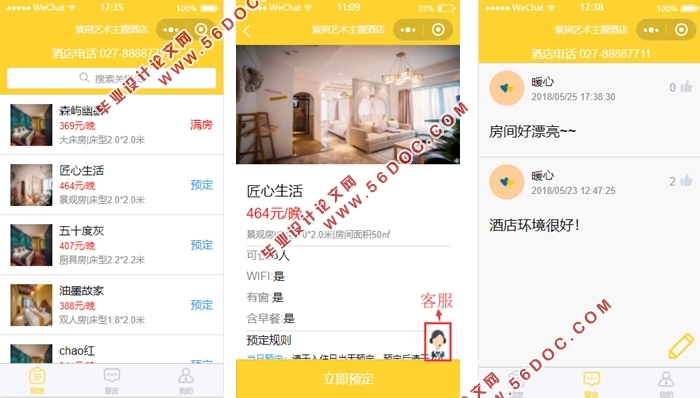
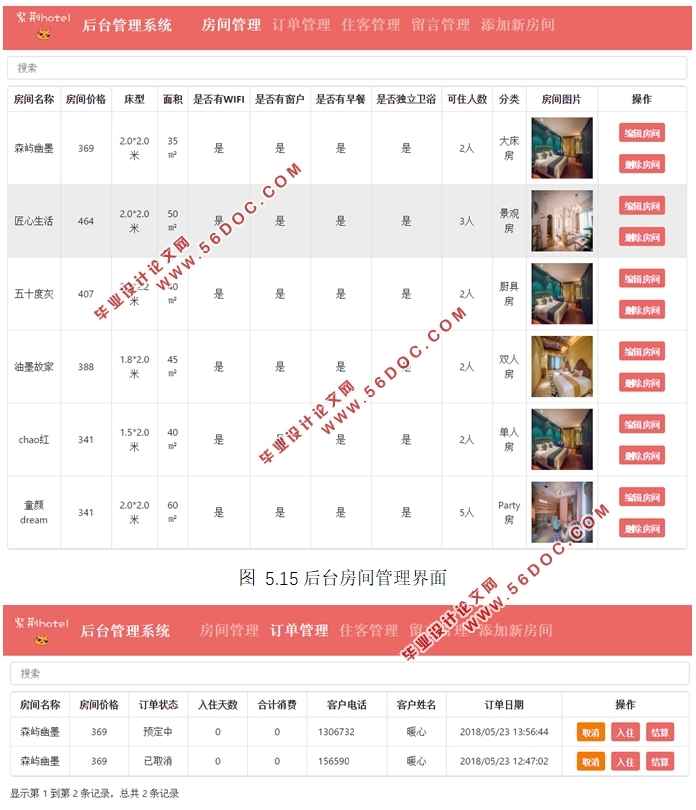
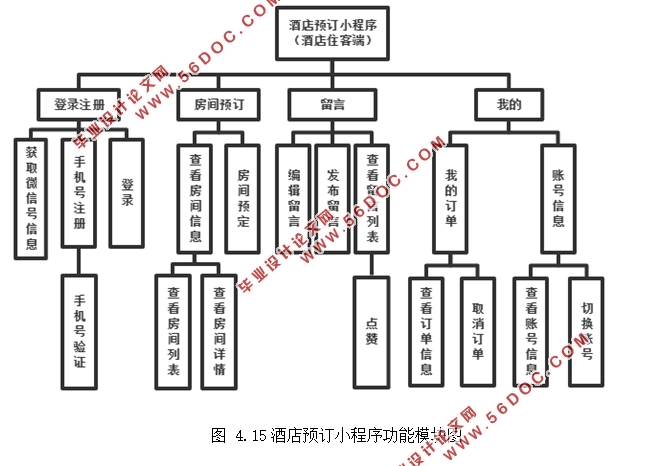
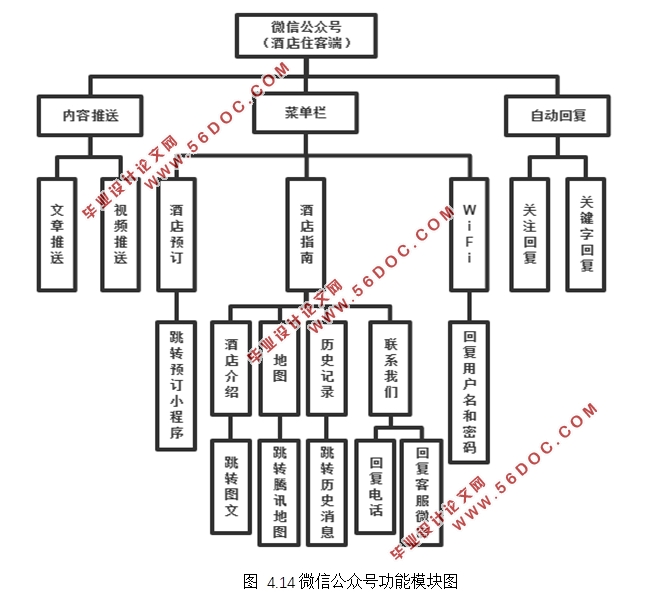
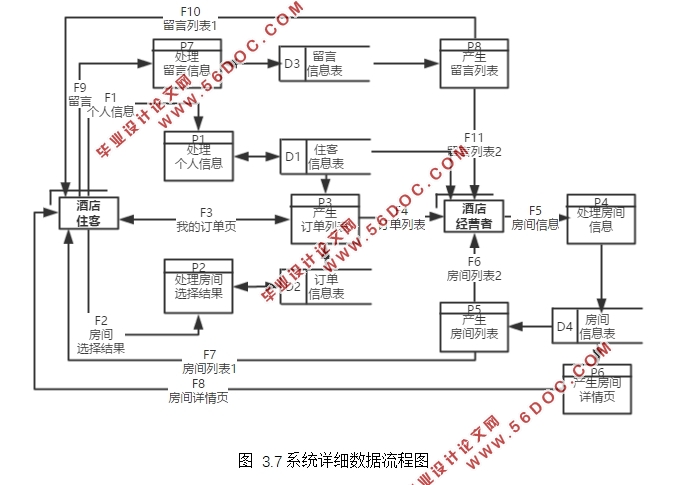
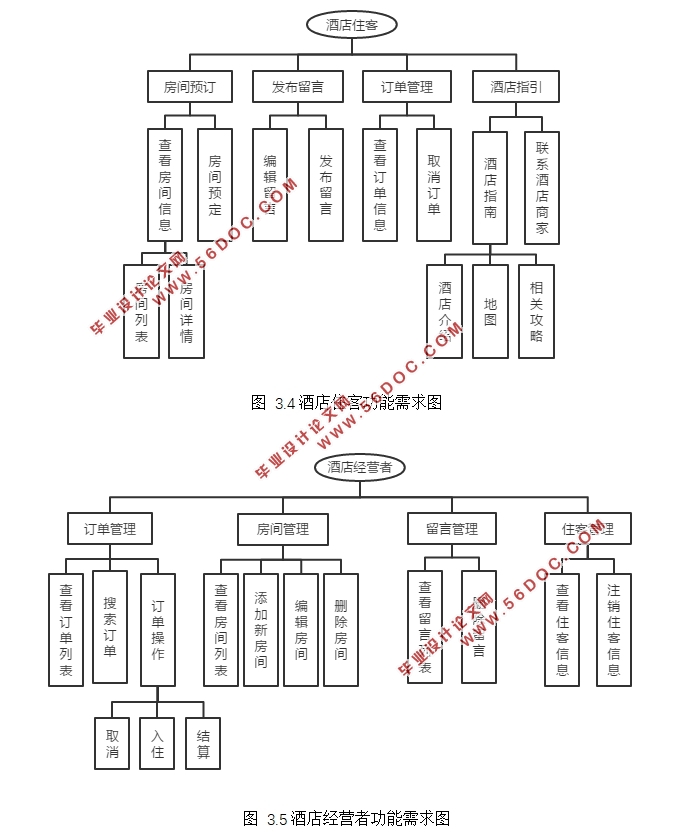
目录
摘 要 II
Abstract III
目录 1
第1章 绪论 3
1.1 项目背景 3
1.2 国内外发展现状研究 4
1.2.1酒店行业国内外发展 4
1.2.2酒店管理系统发展趋势研究 5
1.2.3微信的发展现状 6
1.3微信酒店管理系统研发的意义 7
1.4主要工作内容 8
1.5本文结构 9
第2章 系统规划 10
2.1系统范围描述 10
2.2可行性分析 12
2.2.1经济可行性 12
2.2.2技术可行性 12
2.2.3应用可行性 13
第3章 系统分析 14
3.1系统需求分析 14
3.1.1系统用户特征分析 14
3.1.2业务流程分析 15
3.1.3系统功能需求 16
3.1.4系统非功能性需求 18
3.2 系统数据流程分析 18
3.2.1数据流程图 18
3.2.2数据字典 20
第4章 系统设计 24
4.1系统设计概述 24
4.1.1系统设计原则 24
4.1.2系统设计目标 24
4.2数据库设计 25
4.2.1数据库概念结构设计 25
4.2.2数据库表设计 27
4.3功能模块设计 29
4.3.1酒店后台管理系统(酒店经营者端) 30
4.3.2酒店微信公众号(酒店住客端) 30
4.3.3酒店预订小程序(酒店住客端) 31
第5章 系统实施 33
5.1酒店微信公众号 33
5.2酒店预订微信小程序 35
5.3酒店后台系统 38
5.4系统测试 41
5.4.1系统测试概述 41
5.4.2测试环境与方法 41
第6章 系统维护 43
6.1系统运行管理 43
6.2维护内容 44
第7章 总结 45
参考文献 46
|













